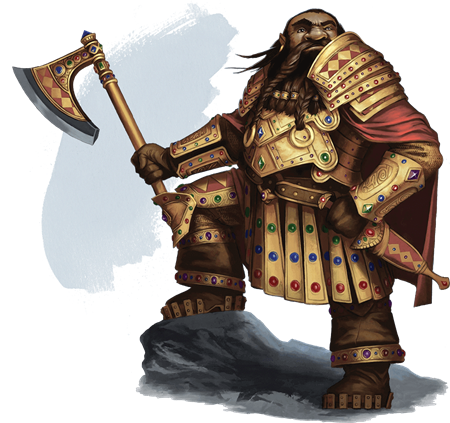 Class is back in session! We’ve completed our second full rotation of the twelve classes in the Player’s Handbook, not to mention taken a deep dive into the first 5 levels of D&D’s thirteenth class, the inventive and arcane Artificer! This wave of the Class 101 series will appraise every subclass within the Player’s Handbook and break down each subclass’s strengths, weaknesses, thematic elements, and everything else a player would want to know before playing that subclass. Because of this, you will need to own the Player’s Handbook (or purchase the subclass a la carte on the Marketplace) in order to make full use of this series.
Class is back in session! We’ve completed our second full rotation of the twelve classes in the Player’s Handbook, not to mention taken a deep dive into the first 5 levels of D&D’s thirteenth class, the inventive and arcane Artificer! This wave of the Class 101 series will appraise every subclass within the Player’s Handbook and break down each subclass’s strengths, weaknesses, thematic elements, and everything else a player would want to know before playing that subclass. Because of this, you will need to own the Player’s Handbook (or purchase the subclass a la carte on the Marketplace) in order to make full use of this series.
However, since there are some classes that only have two subclasses in the Player’s Handbook, we’ll need to go beyond that must-have book to other optional D&D sources. The barbarian is one such class—their next subclass is the Path of the Battlerager, which can be found in the Sword Coast Adventurer’s Guide. If you don’t own this source, but want to play a Battlerager barbarian, you can buy just this subclass alone in the D&D Beyond Marketplace.
Barbarians who follow the Path of the Battlerager are devil-may-care warriors who throw themselves into battle—sometimes literally. They specialize in wearing spiked armor, making every part of their bodies a deadly weapon. This Primal Path has special lore within the Forgotten Realms, where it is exclusively available to dwarf characters. Just imagine a stout, stocky dwarf squat down on his powerful thighs, curl himself into a ball of spikes and steel, and launch himself at a hoard of oncoming drow! Now that’s D&D!
However, you should talk with your DM and fellow players and consider if this racial restriction adds anything to your game. Perhaps Battleragers are actually a dragonborn-specific tradition in your setting, or perhaps the tradition originated with the dwarves and has since spread throughout the land, or maybe this tradition has spread far and wide throughout your setting and has no restrictions at all.
Check out the other articles in the Barbarian 101 series, like the broad overview of the entire class in Barbarian 101: A Beginner's Guide to Relentless Fury, or the deep dives into specific subclasses in Barbarian 101: Path of the Berserker and Barbarian 101: Path of the Totem Warrior.
Story of the Battlerager
Closest to the dark elves, Pwent lowered his head, with its long helmet spike, and impaled one elf through the chest, blasting through the fine mesh of drow armor easily and brutally. The second drow managed to deflect the next battlerager’s charge, turning the helmet spike aside with both his swords. But a mailed fist, the knuckles devilishly spiked with barbed points, caught the drow under the chin and tore a gaping hole in his throat. Fighting for breath, the drow managed to score two nasty hits on his opponent’s back, but those two strikes did little in the face of the flurry launched by the wild-eyed dwarf.
— R.A. Salvatore, Siege of Darkness
Path of the Battlerager Features
The Path of the Battlerager grants you a number of features that give you an edge in hand-to-hand combat, especially when you’re grappling foes or surrounded by loads of enemies. Barbarians always want to be the center of attention, and these abilities will help you handle that attention. The barbarian gains access to four subclass features in addition to their barbarian class features, gained at fairly regular intervals at 3rd, 6th, 10th, and 14th level. You can read all of the Path of the Battlerager features in chapter 4 of the Sword Coast Adventurer’s Guide. In summary, your subclass features allow you to:
- Wear special spiked armor and make special attacks with it
- Gain temporary hit points when you fight recklessly
- Dash as a bonus action while raging
- Deal retributive damage when you’re hit by enemies in melee combat
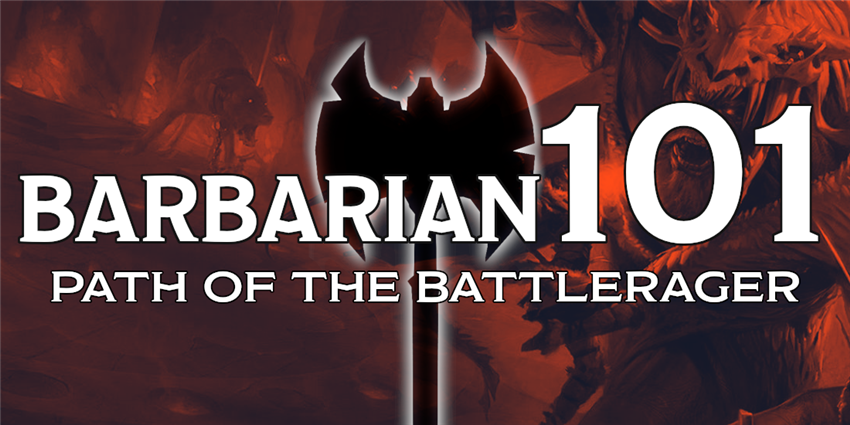
Benefits of Playing a Battlerager
Battleragers are engines of destruction and masters of both one-on-one combat and one-versus-many horde battles. They’re an excellent middle-of-the-road option for players who want to play a warrior that can deal heavy damage and take dozens of hits without falling. If you want to play a warrior that specializes in grappling and single-target lockdowns, the Battlerager fills this niche like no other.
All Battleragers gain the ability to use a special kind of armor—spiked armor. This armor is made of leather and covered in spikes that are “usually” made of metal, so a clever player could decide their armor is made of leather and whale bones, or some similar organic material, to avoid complications from spells like heat metal or shocking grasp. On the other hand, having a set of adamantine spiked armor is quite enticing.
While wearing this armor, a Battlerager can make a special attack with the armor spikes as a bonus action. This attack benefits from your Strength modifier and your bonus damage while raging—so even though it only deals 1d4 damage, your static modifiers give it a bit more of a bite. Moreover, this armor deals 3 piercing damage whenever you successfully grapple a creature. This bonus is nice for any character that wants to specialize in grappling, immobilizing, and attacking creatures, since it allows you to grapple using your Attack action, deal extra damage, and then make another attack with your spiked armor as a bonus action.
While you don’t have any features that discourage enemies from attacking your allies—like any good Tank should—you are strongly encouraged to use your Reckless Attack feature every single turn, since you gain temporary hit points from doing so starting at 6th level. As long as you’re using this feature every turn, your foes will always have advantage on attack rolls against you. While taking lots of damage isn’t a good thing in and of itself, encouraging enemies to attack you instead of your allies is a very good thing indeed. Since you have resistance to bludgeoning, piercing, and slashing damage while raging (and since you get free temporary hit points every single turn while you’re using Reckless Attack) you are much better equipped to take loads and loads of damage than your less durable allies.
Drawbacks of Playing a Battlerager
The greatest drawbacks of the Battlerager barbarian subclass aren’t flaws inherent to the features that this subclass has—generally speaking, its features are all quite solid. No, the biggest drawbacks that you’ll feel while playing a Battlerager are what it lacks. The Battlerager wants to be a Tank that singles out strong enemies and locks them down, keeping them from attacking their allies. Without a bespoke subclass feature that encourages foes to fight the Battlerager instead of their allies—such as the compelled duel spell, the Ancestral Protectors feature from the barbarian’s Path of the Ancestral Guardian, or the Thunder Gauntlets feature from the artficer’s Armorer specialty—it’s difficult to keep enemies from simply walking around the barbarian and attacking easier foes.
It’s possible to mitigate this drawback by taking the Sentinel feat, an excellent feat for any character that wants to protect their allies from harm.
Another minor drawback of the Path of the Battlerager is its dependence upon spiked armor. This armor is a very cool part of the character—it’s the core fantasy of the subclass!—but it will require some buy-in from your Dungeon Master. You’ll need to gain this armor somehow; the game assumes you’ll buy it, but if you and your DM work out a good story reason for you to have it or gain it at 3rd level, it makes more sense to simply have it. You shouldn’t have to pay for your core subclass features.
This is fine in home games where it’s expected for a player and the DM to talk and negotiate and work out what will be most fun for them and the group. But in scenarios in which communication with the Dungeon Master outside of the game is limited, like the D&D Adventurers League (or heaven forbid a home game with an uncommunicative DM), you may find that your armor is a burden upon you. Finding armor upgrades is tons of fun for any martial character, but since your spiked armor is made with a rare, specialized technique, you may have a hard time finding new, useful armor as loot in dungeons unless you and your DM work together to make it happen.
That sort of working might be an agreement that you won’t find armor upgrades in dungeons, but you’ll find lots of gold that you can spend to make bespoke armor upgrades, like special adamantine spikes. Since a set of +1 armor only improves your AC, you may need to make an agreement with your Dungeon Master that +1 spiked armor also gives you a bonus to hit and damage with your armor spikes—and so on. This house rule won’t unbalance the game in any way.
This list of drawbacks may seem long compared to the list of benefits, but don’t be intimidated; all of the drawbacks with the Battlerager are small, persnickety nitpicks that require explanation and examination. Its benefits, on the other hand, are largely self-evident.
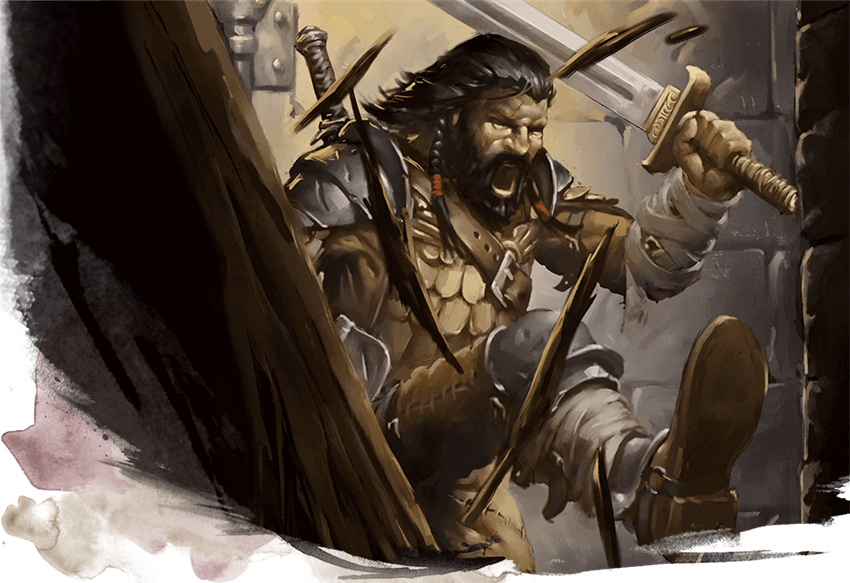
Suggested Build
Like most classes in D&D, the barbarian doesn’t choose their subclass until 3rd level. If you’re playing a barbarian from 1st level and think you want to follow the Path of the Battlerager later, you should choose the only race available to Battleragers—dwarf! Any dwarf subrace is technically allowed, though mountain or hill dwarf would be more appropriate.
However, if you’re playing in a game without the dwarven racial restriction, playing a race that improves your Strength and Constitution scores would suit this subclass best. You want to take lots of damage and deal lots of damage, and Strength and Constitution will help you with both.
This includes the dragonborn race, which gives you some extra Charisma in case you want to be a more personable warrior (and their Breath Weapon’s grows more powerful based on your Constitution, too, which should be high as a barbarian!). You could also play a mountain dwarf, who are both hardy and strong. Half-orcs are also blessed with incredible physical strength, and make excellent front-line warriors. Humans are also good barbarians, and the feat they gain at 1st level only adds to their versatility—you will likely want to take the Sentinel and Great Weapon Master feats as a Battlerager, so having a free feat from level 1 is a huge boon.
As usual, your character’s background is up to you. You can come up with all sorts of interesting stories and oddball characters by pairing unlikely backgrounds with a class as thematic as barbarian. Were a Soldier that served in the armies of the Lords’ Alliance for a time before returning to your dwarven clan? Or were you a Hermit possessed with a terrible divine wrath that decided to take up arms against your foes?
I would recommend choosing GOLD instead of EQUIPMENT at the end of character creation, and using that gold to buy a greataxe or greatsword, a few throwing weapons like hand axes and javelins, and a set of scale mail. Your Unarmored Defense feature will keep you safe even without armor, but it relies on your having a high Dexterity bonus to stay protected. If you want to focus on dealing damage with giant melee weapons, this scale mail will help keep your Armor Class high even without a lot of Dexterity. Your DM might even allow you to pay 25 gold to affix spikes to your armor later (paying the difference between the 50 gp scale mail and 75 gp spiked armor, which are otherwise statistically identical).
When the time comes to pick a feat at 4th level (or even at 1st level, if you’re playing a variant human!), check the “Feats” section below. There are a number of useful feats that will serve any Battlerager well.
Also, once you reach 5th level in the barbarian class, you may wish to divert from your current path to multiclass into fighter for three levels. This three-level “dip” into fighter grants you the powerful Great Weapon Fighting Style, an Action Surge for more attacks, and the Improved Critical feature if you choose the Champion fighter subclass, all of which synergize well with your offensive barbarian features.
Feats
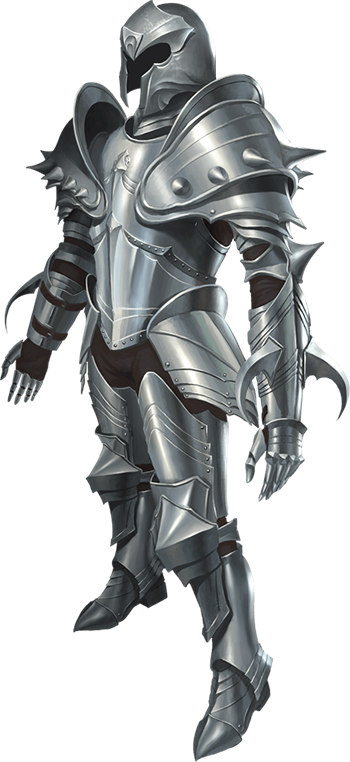 Barbarians who follow the Path of the Battlerager have a number of feats they want in order to be truly fearsome warriors. You may even want to take some of these feats before maxing out your Strength or Constitution scores, simply because of how useful they are.
Barbarians who follow the Path of the Battlerager have a number of feats they want in order to be truly fearsome warriors. You may even want to take some of these feats before maxing out your Strength or Constitution scores, simply because of how useful they are.
Athlete. This feat comes with a free point of Strength, which you can never get enough of. The benefits are niche but occasionally useful, so consider picking this one up if you wind up with an odd-numbered Strength score.
Grappler. A rare feat to recommend, but a vital one for any character that wants to grapple and immobilize foes. Since you deal bonus damage while you grapple foes—and enjoy attacking foes that you’ve grappled—this feat will make it easier to lock down your most threatening enemies.
Great Weapon Master. These days, it practically goes without saying that Great Weapon Master is one of the best feats in the game. Choosing this feat will send your damage output into the stratosphere.
Medium Armor Master. Far from the most important feat on this list, but it could be situationally useful if you wind up sneaking a lot in your campaign.
Sentinel. You always want to be where the fighting is fiercest, giving you plenty of chances to use this feat. If you want to protect your allies from monsters, there’s no better feat than this.
If you want more advice for building a barbarian, check out Barbarian 101. Have you ever played a Path of the Battlerager barbarian? What advice would you give to players that want to play this subclass? Next week, Class 101 will cover the bardic College of Eloquence, a silver-tongued orator from Mythic Odysseys of Theros. What's your barbarian character like? Let us know in the comments!
Create A Brand-New Adventurer Acquire New Powers and Adventures Browse All Your D&D Content
 James Haeck is the lead writer for D&D Beyond, the co-author of Waterdeep: Dragon Heist, Baldur's Gate: Descent into Avernus, and the Critical Role Explorer's Guide to Wildemount, a member of the Guild Adepts, and a freelance writer for Wizards of the Coast, the D&D Adventurers League, and other RPG companies. He lives in Seattle, Washington with his fiancée Hannah and their animal companions Mei and Marzipan. You can find him wasting time on Twitter at @jamesjhaeck.
James Haeck is the lead writer for D&D Beyond, the co-author of Waterdeep: Dragon Heist, Baldur's Gate: Descent into Avernus, and the Critical Role Explorer's Guide to Wildemount, a member of the Guild Adepts, and a freelance writer for Wizards of the Coast, the D&D Adventurers League, and other RPG companies. He lives in Seattle, Washington with his fiancée Hannah and their animal companions Mei and Marzipan. You can find him wasting time on Twitter at @jamesjhaeck.








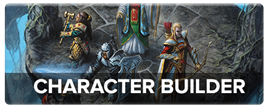
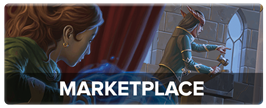
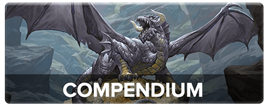
-
View User Profile
-
Send Message
Posted Aug 7, 2020I have never heard of this subclass before
-
View User Profile
-
Send Message
Posted Aug 7, 2020the bit about whale bone or other implements for spikes made me think of other 'natural' items for the blades and spikes of the armor and now I want to play a Battlerager that wears the pelt of a giant dire-porcupine.... maybe a Druid multiclass?
-
View User Profile
-
Send Message
Posted Aug 7, 2020just love when you stab someone with armor
-
View User Profile
-
Send Message
Posted Aug 7, 2020Battleragers are super cool! I never realized that their armor spikes was a bonus action, so I only now figured out their true power.
Speaking of "diping" into another class: I am playing a campaign where the DM started us at 12th level, and I took 11 levels in fighter and one in barbarian. I got so many useful things from that one level, with rage and unarmored defense(I had a 19 AC, higher that you can get with any nonmagical armor). I also worked with my DM to make a homebrew item for the bat'leth. Baisically, you can use it in 3 ways: 1) as a longsword 2) as 2 daggers w/o finesse, and 3) as a shortsword and a shield. It is super fun, and as a half-orc and champion, on a 19-20 I get x3 dice!
-
View User Profile
-
Send Message
Posted Aug 7, 2020Great article, and excited that class 101 is back. Are you going to do your own "Story of The..." again, or take the ones in the books?
-
View User Profile
-
Send Message
Posted Aug 7, 2020This subclass had an excellent quote ready-made in a book that relatively few people have read. I love writing these little prose segments, so I'll gladly write more when the situation calls for it! =)
-
View User Profile
-
Send Message
Posted Aug 7, 2020My biggest problem with the subclass is that some of the class features feel kind of insubstantial for the level you're getting them.
-
View User Profile
-
Send Message
Posted Aug 7, 2020I’ve got a Lizard-folk with this subclass. I’m saying that his natural armor is spiky, like a horned lizard. He likes hugs! But he has danger hugs.
-
View User Profile
-
Send Message
Posted Aug 7, 2020the dwarf picture isnt wearing spiked armor
I LOVE THIBBLEDORF PWENT
-
View User Profile
-
Send Message
Posted Aug 7, 2020It's in the SCAG. Most people tend to forget those subclasses (at least the bad ones).
-
View User Profile
-
Send Message
Posted Aug 7, 2020If the UA unarmed fighting style becomes official, that meshes pretty well with the Battlerager and might merit a fighter dip (or a feat if the UA fighting style feat also becomes official).
-
View User Profile
-
Send Message
Posted Aug 7, 2020I'm playing a Battlerager in a game (though it's been on hold for over a month). It's a fun class, though it's one where it's really tempting to only go up to level 6 given that the level 10 and 14 abilities are less spectacular.
The interesting thing is that this is the only barbarian path that is unambiguously totally non magical in all its abilities (the berserker being one where a case could be made either way with some of its powers).
-
View User Profile
-
Send Message
Posted Aug 7, 2020My biggest complaint with the subclass is dwarf restriction. Yes, I understand the lore from the Salvatore books, but telling players "no" to a archetype brings nothing to the game. I'm personally an elf guy, and I hate the Bladesinger restriction just as much. As for the battlerager itself, it's one of the few ways you can get a 2h weapon /and/ have a bonus action attack without feat investment.
-
View User Profile
-
Send Message
Posted Aug 8, 2020Ah, the Gutbuster Brigade...
A horde of stampeding battlrager dwarves, leading a suicidal charge, all decked-out in spiked armor as they fling themselves into the enemy ranks, twisting & spinning like blenders.
-
View User Profile
-
Send Message
Posted Aug 8, 2020Same. It feels like a vestigial holdover from 2nd or 3rd edition where there was a ridiculous amount of kits and prestige classes that were limited by race.
-
View User Profile
-
Send Message
Posted Aug 8, 2020Hi James,
I believe there is a problem with the mechanics in your description regarding gaining temporary hit points starting at 6 level while using Reckless Attack.
“While you don’t have any features that discourage enemies from attacking your allies—like any good Tank should—you are strongly encouraged to use your Reckless Attack feature every single turn, since you gain temporary hit points from doing so starting at 6th level. As long as you’re using this feature every turn, your foes will always have advantage on attack rolls against you. While taking lots of damage isn’t a good thing in and of itself, encouraging enemies to attack you instead of your allies is a very good thing indeed. Since you have resistance to bludgeoning, piercing, and slashing damage while raging (and since you get free temporary hit points every single turn (emphasis mine) while you’re using Reckless Attack) you are much better equipped to take loads and loads of damage than your less durable allies.”
Reckless Attack is described on the digital character sheet as :
Reckless Attack PHB, pg. 48
When you make your first attack on your turn, you can decide to attack recklessly, giving you advantage on melee weapon attack rolls using STR during this turn, but attack rolls against you have advantage until your next turn.
Whereas, the description of Reckless Abandon (which is what I assume you are really referring to) states:
Reckless Abandon, SCAG
When you use Reckless Attack while raging, you also gain +(x) temporary HP.
“Beginning at 6th level, when you use Reckless Attack while raging, you also gain temporary hit points equal to your Constitution modifier (minimum of 1). They vanish if any of them are left when your rage ends.”
The implication here is that the temporary hit points per your character class review would suggest that these temporary hit points are gained every turn (round?) similar to the Artificer Armorer sub-class. However, the description in the rule makes it appear that the temporary hit points are only gained once per rage, and not once per turn.
As Reckless Abandon is part and parcel of Reckless Attack, you won't be performing one without the other. However, it is curious to note that on my sample character's description, it actually breaks this out into two distinct listings, as noted above. Test it yourself and you will see what I am talking about. Regardless of the reason behind why DDB decided to break Reckless Attack into two components on the digital character sheet, the amount of temporary hit points gained should be once per rage, and not once per turn, IMO.
-
View User Profile
-
Send Message
Posted Aug 8, 2020Reckless Abandon doesn't specify that it only works once per rage, just that it goes off when you use Reckless Attack. Fifth Edition rules operate on the general assumption that limitations will be explicitly listed in an ability's description rather than simply implied. Since Reckless Abandon doesn't state that it only works once per rage, it therefore means that it works every time you use Reckless Attack while you're raging.
-
View User Profile
-
Send Message
Posted Aug 8, 2020This. Reckless Abandon gives you the temp HP every single turn that you use Reckless Attack.
-
View User Profile
-
Send Message
Posted Aug 8, 2020On house rule I would use if a player actually took this class would be to waive the "whilst you are not wearing any armor" condition on Unarmored Defense, so the battlerager could use whichever AC where better.
Something the DM can do is add a much bigger range of spiked armor (and spiked shields, spiked gauntlets, etc), or have an "Armor Spikes" item that can be attached to any armor. I suspect the lack of these items is one reason this subclass is so little known.
There is also the possibility that the character might have spikes permanently attached or a natural part of their body - e.g. warforged, tortles, porcupine Shifters, Simic Hybrids, variant tieflings, maybe even lizardfolk and dragonborn.
-
View User Profile
-
Send Message
Posted Aug 8, 2020I would recommend getting tavern brawler on this barbarian. The ability to grapple a goblin and use him as a club on the other goblins while stabbing them to death with your armor is simply too awesome.